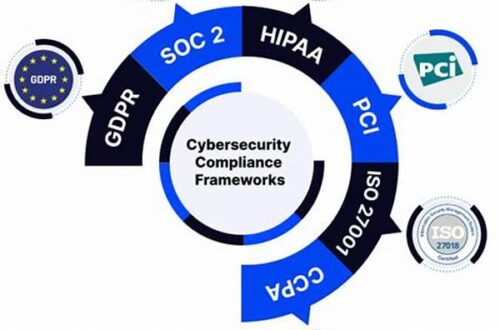In an era of rapidly evolving technology, organizations across various sectors are increasingly reliant on robust cybersecurity measures to protect their digital assets. The sophistication of cyber-attacks has reached unprecedented levels, necessitating the development and deployment of effective cybersecurity threat detection systems. These systems play an indispensable role in identifying, monitoring, and mitigating potential security breaches that could disrupt operations and compromise sensitive information. As cyber threats continue to grow in complexity and frequency, the implementation of advanced threat detection mechanisms becomes even more critical to safeguarding both organizational and personal data.
Understanding Cybersecurity Threat Detection Systems
Cybersecurity threat detection systems are designed to identify unauthorized access or unusual activity within an organization’s network infrastructure. By efficiently detecting potential threats, these systems serve as a frontline defense against cyber-attacks. Organizations utilize various techniques such as anomaly detection, intrusion detection systems (IDS), and security information and event management (SIEM) to bolster their security posture. Intrusion detection systems, for instance, work by analyzing network traffic to recognize patterns that may indicate malicious behavior. On the other hand, SIEM solutions aggregate and analyze data from multiple sources to provide a comprehensive view of potential security incidents. Implementing these systems requires a thoughtful approach, aligning with organizational objectives while considering cost implications and resource availability. Moreover, continuous updates and maintenance are essential to ensure their effectiveness in counteracting emerging cyber threats thus prioritizing the investment in cybersecurity threat detection systems is now more crucial than ever for businesses.
Key Features of Cybersecurity Threat Detection Systems
1. Real-time Monitoring: Cybersecurity threat detection systems provide real-time monitoring capabilities, allowing organizations to promptly identify and respond to potential security breaches. This is vital in minimizing damage and maintaining the integrity of sensitive data.
2. Automated Alerts: These systems are equipped with automated alert functionalities, ensuring that security teams are immediately notified of suspicious activities. This facilitates swift action and aids in preventing extensive damage from cyber-attacks.
3. Advanced Analytics: Incorporating advanced analytical tools, cybersecurity threat detection systems can scrutinize vast amounts of data quickly and efficiently. This aids in uncovering potential threats that might evade traditional security measures.
4. Integration Capabilities: Effective threat detection systems are designed to seamlessly integrate with existing security infrastructures. This interoperability is key in enhancing an organization’s overall cybersecurity posture without causing significant disruption.
5. Customizable Solutions: Organizations can tailor cybersecurity threat detection systems to meet specific needs, enabling them to focus on particular threats relevant to their operational environment, thereby enhancing overall effectiveness.
Challenges in Implementing Cybersecurity Threat Detection Systems
The implementation of cybersecurity threat detection systems is not without its challenges. Organizations often face hurdles such as budget constraints, preventing them from acquiring advanced technologies necessary for robust protection. Additionally, the integration of new systems with existing security infrastructure can be complex, requiring careful planning and execution. Another challenge is the shortage of skilled cybersecurity professionals capable of managing and maintaining these systems effectively. Human expertise remains indispensable despite advancements in artificial intelligence and machine learning. Furthermore, the dynamic nature of cyber threats necessitates continuous updates and adjustments to detection mechanisms, which can be resource-intensive. Balancing these demands while ensuring optimal security poses a significant challenge for many organizations. Despite these hurdles, the need for comprehensive cybersecurity threat detection systems remains paramount for safeguarding digital assets and maintaining operational resilience.
Benefits and Importance of Cybersecurity Threat Detection Systems
Implementing robust cybersecurity threat detection systems offers numerous benefits to organizations. Firstly, these systems enable early identification of threats, thereby minimizing the risk of significant data breaches. The ability to detect and neutralize threats before they escalate is crucial in protecting sensitive information and maintaining stakeholder trust. Moreover, effective threat detection systems contribute to regulatory compliance by ensuring that data protection laws and guidelines are adhered to. Organizations can demonstrate their commitment to safeguarding data privacy, thus enhancing their reputation and credibility. Furthermore, by minimizing the damage caused by cyber incidents, these systems can result in considerable cost savings for organizations in terms of recovery and potential legal liabilities. Overall, investing in cybersecurity threat detection systems is essential for maintaining strong security posture and fostering long-term organizational growth.
Future Trends in Cybersecurity Threat Detection Systems
As technology continues to advance, so do the trends in cybersecurity threat detection systems. Emerging technologies such as artificial intelligence and machine learning are increasingly being leveraged to enhance the capabilities of these systems. AI-powered threat detection solutions offer improved accuracy and speed in identifying potential threats by analyzing large volumes of data and recognizing patterns that human analysts might overlook. Additionally, the incorporation of machine learning models allows for adaptive threat detection, where systems can learn from new data to improve performance over time. Another trend is the growing emphasis on threat intelligence sharing among organizations. Collaborative efforts in sharing information on emerging threats facilitate collective defense against cyber adversaries. Furthermore, there is a shift towards more comprehensive threat detection systems that integrate multiple layers of security, providing a holistic approach to cybersecurity. As these trends continue to evolve, they are expected to significantly enhance the effectiveness of cybersecurity threat detection systems in safeguarding digital environments.
Summary of Cybersecurity Threat Detection Systems
Cybersecurity threat detection systems are a crucial component in the defense against ever-evolving cyber threats. These systems enable organizations to identify, monitor, and respond to potential security breaches effectively. By incorporating advanced technologies and maintaining a proactive approach, organizations can enhance their ability to detect and mitigate threats, thereby minimizing the risk of data breaches and financial losses. Despite challenges such as budget constraints and skill shortages, the investment in robust threat detection mechanisms proves invaluable in maintaining a strong security posture. Future trends in the industry indicate a shift towards AI-driven solutions and collaborative threat intelligence sharing, promising a more resilient and adaptive security landscape. Overall, organizations must prioritize the implementation and continuous improvement of cybersecurity threat detection systems to safeguard their digital assets and ensure long-term success in an increasingly connected world.





